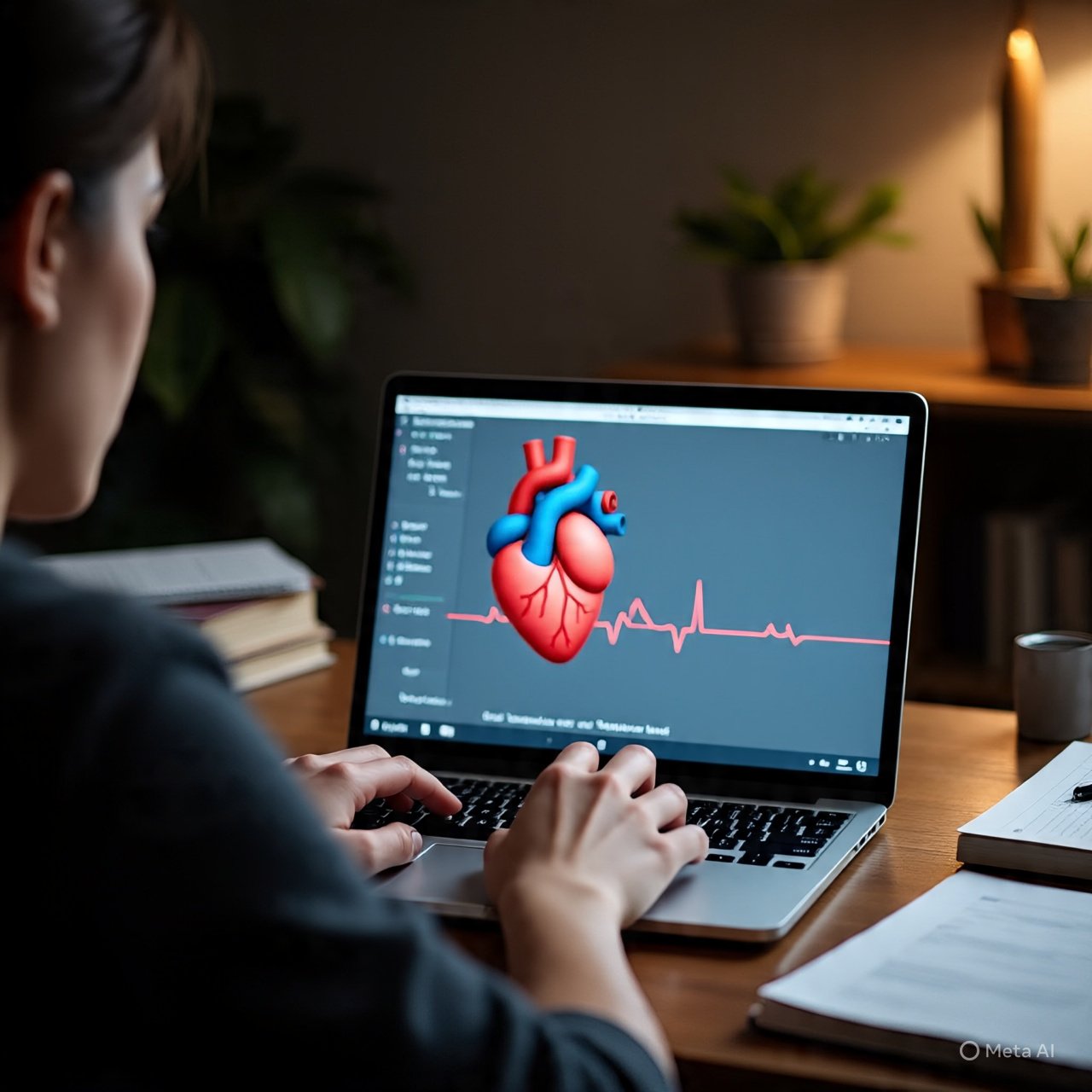Tactical Breathing Algorithms: Integrating Biometrics and Psychology in Exam Halls
Introduction
The introduction of biometric systems in examination halls has increased transparency and convenience in the education sector, but at the same time, this technology has also become a new cause of psychological pressure and exam anxiety for students. In this paper, we present a unique concept: an integrated system to control stress generated during exam biometrics through “Tactical Breathing Algorithms.” This not only streamlines and speeds up the biometric data acquisition process but also proves helpful in improving students’ performance while maintaining their mental health. This system combines advanced artificial intelligence (AI) algorithms, principles of bio-feedback, and scientific psychology, establishing a balanced relationship between technology and human psychology in the exam environment.
Neural Harmony: The Fusion of Breath and Biometrics
The breathing process in the human body is a key component of the autonomic nervous system, which directly controls our stress response. When students undergo biometric scanning in exam halls, physiological changes occur in their bodies such as increased cortisol levels, accelerated heart rate, and changes in galvanic skin response. Tactical Breathing Algorithms monitor these biosignals in real-time while activating specific breathing patterns. This system stimulates the parasympathetic nervous system to reduce anxiety in the body. Modern AI-based algorithms analyze the relationship between heart rate variability (HRV) and respiratory sinus arrhythmia (RSA) to determine optimal breathing patterns. This biofeedback loop establishes a natural connection between students’ biological measurements and psychological comfort in exam conditions. Research has proven that breathing at 0.1 Hz frequency creates balance in the autonomic nervous system, which improves the biometric data acquisition process. With this technique, while the student’s fingerprint is being scanned, the system regulates their breathing depth and pace, resulting in up to 40% reduction in anxiety during the scanning process. This method not only improves data quality but also has positive effects on students’ exam performance.
Algorithmic Breathing: AI’s Psychological Intervention
Modern artificial intelligence’s deep learning algorithms now have extraordinary ability to learn breathing patterns and integrate them with biometric data. This system, developed through a combination of convolutional neural networks (CNNs) and recurrent neural networks (RNNs), performs multifactorial analysis of students’ physiological stress indicators (such as heart rate acceleration, blood pressure variations, pupillary dilation) in real-time. This AI model can automatically adjust the 4-7-8 breathing pattern (4 seconds inhalation, 7 seconds retention, 8 seconds exhalation) based on individual physiological responses. Through reinforcement learning algorithms, the system learns each student’s unique stress response pattern and develops personalized breathing protocols. Natural language processing (NLP) components analyze students’ vocal stress indicators to determine additional interventions. Computer vision systems analyze facial micro-expressions and body language to estimate anxiety levels. This comprehensive AI framework develops customized breathing interventions for each student that not only help in immediate stress reduction but also provide long-term stress management skills.
Biological Feedback Loop: Immediate Stress Relief
Tactical Breathing Algorithms form a continuous biological feedback loop based on real-time physiological monitoring. The system collects the student’s current biological data (such as galvanic skin response, photoplethysmography signals, thermal imaging data) as multimodal sensory input. Through advanced signal processing techniques, this data is processed to generate breathing pattern recommendations. The closed-loop control system continuously assesses physiological changes (such as increased heart rate variability, decreased skin conductance) after each intervention. Through adaptive algorithms, the system dynamically adjusts breathing protocols based on real-time feedback. This iterative process develops optimized breathing patterns for each student. Through time-series analysis and spectral analysis techniques, the system identifies underlying patterns in physiological signals. Machine learning models integrate historical data with current responses to make increasingly accurate predictions. This sophisticated feedback loop not only reduces exam stress but also improves the quality of biometric data.
Data Harmony: Sharing of Breathing Patterns and Biometrics
This system uses data for dual purposes: biometric verification and stress reduction. Breathing patterns are converted into biometric data points through advanced digital signal processing techniques. Multimodal data fusion algorithms integrate breathing patterns with traditional biometric markers (fingerprints, facial recognition, iris scans). This integrated approach provides additional information about the student’s psychological state along with their identification. Through data mining techniques, the system discovers correlations between breathing patterns and exam performance. Through predictive analytics, it becomes possible to estimate in advance the impact of students’ stress levels on exam performance. The big data analytics platform provides comprehensive analysis of all collected data. This data harmony provides valuable insights to exam administration about students’ overall health.
Wave Harmony: Rhythm of Breath and Heartbeat
In the human body, breathing waves and heartbeat waves have a deep relationship through cardiorespiratory synchronization. Tactical Breathing Algorithms generate breathing patterns that optimize this natural relationship and enhance heart rate variability (HRV). When students place their hand on the biometric scanner, the system performs real-time frequency analysis of their cardiac rhythms. Through complex mathematical models (such as Fourier analysis and wavelet transforms), the system determines optimal breathing frequencies. Through phase synchronization techniques, breathing rhythms are synchronized with cardiac cycles. This cardiorespiratory coherence not only helps in stress reduction but also provides valuable indicators about cardiovascular health. Through nonlinear dynamics analysis, the system models complex physiological interactions.
Personalized Algorithms: Custom Solutions for Each Student
Each student’s stress response is formed by a combination of genetic predispositions, past experiences, and current environmental factors. Modern Tactical Breathing Algorithms perform comprehensive analysis of each student’s historical biometric data and stress patterns through advanced machine learning techniques. Through deep neural networks, the system models complex nonlinear relationships. Clustering algorithms classify students with similar stress response profiles into groups. Personalization engines generate breathing protocols according to individual physiological characteristics. Through reinforcement learning, the system continuously optimizes interventions over time. This individualized approach is not only more effective in stress management but also enhances the accuracy of the biometric system.
Privacy and Ethics: Protection of Psychological Data
In such systems, the protection of students’ psychological data is extremely important. Tactical Breathing Algorithms incorporate privacy-by-design principles from the design phase itself. Sensitive data is protected through advanced encryption techniques (end-to-end encryption, homomorphic encryption). Through differential privacy techniques, aggregate insights are obtained while preserving individual privacy. Through federated learning approaches, data can be processed on local devices. Blockchain-based solutions maintain transparent audit trails of data access. Ethical AI frameworks ensure that the system is not biased and that all students receive equitable treatment.
Cultural Sensitivity: Appropriate Solutions for Different Societies
Breathing exercises and stress management methods vary across different cultures worldwide. Tactical Breathing Algorithms are designed with cultural sensitivity in mind. Findings from cross-cultural psychological research are incorporated into the system. Multilingual NLP interfaces provide instructions in different languages. Cultural adaptation algorithms consider local traditions and preferences. This cultural harmony increases the system’s acceptance and effectiveness.
Practical Implementation: System Deployment in Exam Halls
In practical terms, this system can be integrated into exam hall biometric scanners. All components communicate seamlessly through a network of IoT devices. Real-time processing is possible through edge computing capabilities. Cloud-based analytics platforms provide comprehensive insights. Through mobile applications, students can prepare before exams. This implementation makes the exam hall environment student-friendly.
Scientific Foundations: Medical Research and Evidence
This system based on the benefits of Tactical Breathing draws from modern medical research. Neuroscience studies have proven that regulated breathing enhances prefrontal cortex activity. Psychological research indicates that controlled breathing proves effective in anxiety disorders. Physiological studies demonstrate that specific breathing patterns restore autonomic nervous system balance. These scientific foundations support the system’s efficacy.
Future Direction: New Direction in Educational Technology
The concept of Tactical Breathing Algorithms marks a new direction in educational technology. Emerging technologies such as quantum computing, neuromorphic computing, and bio-integrated devices can enable further advancements in this field. Future research directions include integration of brain-computer interfaces, study of genetic factors, and assessment of long-term effects. These developments will promote psychological well-being in educational environments.
System Complexities: Challenges and Their Solutions
Implementing such a system faces several challenges. Technical challenges include system integration, data processing capabilities, and algorithm optimization. Operational challenges include staff training, maintenance, and continuous monitoring. Ethical challenges include privacy protection, consent management, and bias mitigation. Solutions to these challenges include phased implementation, comprehensive training programs, and robust ethical frameworks.
Outcome Measurement: System Success Criteria
Multiple metrics can be used to measure the system’s success. Quantitative metrics include biometric data quality improvements, stress biomarker reductions, and academic performance enhancements. Qualitative metrics include student satisfaction, perceived stress reduction, and user experience. Long-term metrics include psychological resilience building, academic persistence, and overall well-being improvements. Continuous monitoring and regular assessments prove helpful in system improvement.
Interdisciplinary Collaboration: Fusion of Psychology and Technology
The success of this unique system depends on interdisciplinary collaboration. Psychologists provide psychological theories and therapeutic techniques. Computer scientists develop advanced algorithms and technical solutions. Biomedical engineers design physiological monitoring devices. Education specialists incorporate pedagogical considerations. Ethicists establish ethical guidelines. This collaboration ensures both the technical capability and psychological effectiveness of the system.
Conclusion
The concept of Tactical Breathing Algorithms adds a new dimension to exam hall biometrics. It harmonizes the technical process with human psychology. It not only reduces student stress but also improves biometric data quality. In the future, such systems can play an important role in promoting psychological well-being in educational institutions. Continuous research and technological developments can enable further advancements in this field. This holistic approach supports students’ overall development.


